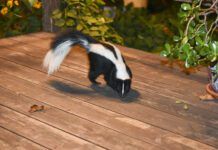The harness is routinely used for certain canine activities such as carting, mushing, tracking, and guiding the disabled. It is also an important accessory for the canine seat belt, since it’s not safe to restrain your dog by his collar in a moving vehicle.
Oddly, there isn’t much talk about the value of the harness as a basic positive training tool. With all the justifiable concern about the risk to a dog’s throat from pressure, or worse, jerks on a collar, it would seem that harnesses might find greater favor with positive trainers.
There are a number of advantages to using a harness. In addition to the total lack of pressure placed on the dog’s vulnerable trachea by a good harness, it is almost impossible for a dog to slip out of a well-designed, properly-fitted harness. Because it distributes pressure across the dog’s entire chest, a harness is also far less likely than a collar to contribute to spinal misalignments, particularly for dogs who have a tendency to lunge and hit the end of the leash with their full weight. Thus, they are the tools of choice for dogs who do suffer from spinal problems and/or damaged tracheas.

Finally, if you use a canine seat belt, getting into the car with Rover doesn’t require the additional step of donning an extra piece of equipment.
There are disadvantages to using a harness, however. Putting a harness on a dog can be a frustrating experience, especially if he doesn’t cooperate. It is certainly more comfortable for a dog to pull on the leash when he’s wearing a harness, since the pressure is distributed over a wider area, so you may need to spend additional time working on polite leash-walking behaviors. Plus, a large, strong dog in a harness might easily drag a small or not-strong handler right along behind him.
In addition, harnesses can rub and cause wear and tear on canine coats, even matting on long-haired dogs, and a poorly fitted harness may chafe the dog under his front legs, and even result in sores.
Finally, fitting can be a challenge. The best harnesses are generally not available from local pet supply stores, which means you may have to order them online or from a catalog. Measurements for harnesses are usually taken around the dog’s barrel, right behind the elbows, and ideally, an adjustable harness will fit dogs within a given measurement range so you can select the size most likely to fit your dog.
Like most training tools, harnesses may be appropriate for some dogs and not for others. If you are looking for a way to prevent Rover’s walk from being a pain in the neck for him, a harness just might be the ticket.
What we’re looking for
Ideally, a harness would be made of a soft but strong material, with sturdy fittings, designed so that it’s simple to figure out and put on the dog. Harnesses generally consist of several different straps (chest, barrel, back, and sternum), and these pieces should be stitched and/or held together with reliably strong metal or plastic hardware. All the various straps should be easily adjustable to allow for fitting to an almost infinite variety of canine shapes and sizes.
When properly adjusted, straps should lie flat on the dog’s body, and the hardware should be positioned in places where the pieces are least likely to rub – that is, not under the armpits – or prevent a dog from lying down or sitting comfortably.
Ideally, harnesses allow an option for attaching a leash either at the back (above the dog’s midsection) or behind the neck (for dogs who may need a little more control) without putting pressure on the dog’s throat.
We would expect to pay a reasonable price for a well-made harness, and having a choice of colors and designs would be icing on the cake.
There are literally dozens of harnesses on the market, and we couldn’t test them all. However, for comparison, we did try to purchase a wide variety of the ones that appeared to meet our criteria.
Top picks in harnesses
The Premier Surefit Harness, made by Premier Pet Products of Richmond, Virginia, offered all of our most desirable features, as well as one unique to this brand – the ability to unbuckle the harness from both sides. This means you can put it on your dog without having to lift up and thread through one of his front legs, and you can easily remove the harness from either side.
This harness is made of top quality materials and has five adjustment locations – on the sternum strap (underneath the dog’s chest) and on each side of the barrel and neck, and the adjustment buckles are easy to use. In addition, it offers two attachment points for a leash: behind the neck and farther down the back. Premier is known for producing high quality products, so it didn’t surprise us that we found very little to dislike about their harness. Our only complaint is that the minimum size is 12 inches, and some young toy breed pups might need smaller than that.
The Quick-Klip Adjustable Harness, made by Leather Brothers of Conway, Arkansas, is a solid, nicely-made, reasonably-priced no-frills harness, although more costly than our top-choice harness. The nonadjustable sternum strap is a mild drawback (the harness offers a total of three adjustment points), but it is a serviceable product.
White Pine Outfitters, of Iron River, Wisconsin, makes consistently high quality products and its Tracking Harness (not limited to use for tracking) is no exception. It was, however, the highest-priced harness we found on the market, so be prepared to pay a little more for its quality materials. We especially love the exceptionally soft web material that White Pines uses in its products.
One note – there seems to be an unwieldy excess length of material in the sternum strap – probably to allow for maximum adjustment. Once the harness is fitted properly to your dog, you will need to cut off the excess strap and heat-seal the end.
The harness adjusts in four places, and we found the adjustment hardware to be easy to move.
Middle-ranked
The Non-Restrictive Harness made by Lupine, Inc., of Conway, New Hampshire, is a workable harness, but one that offers less comfort, and is at the high end of the price range. It does come with a lifetime guarantee, even if chewed, so if your dog is a termite when it comes to canine accessories, this product might have greater value for you!
We found the nylon material to be strong but a little stiff, which makes it less comfy for the dog and more difficult to adjust; it required a little more effort to slide the somewhat inflexible material through the three adjustment points. It does, however, offer both front and rear attachments for a leash, and colorful pattern choices.
The Adjustable Nylon Harness made by Scott Pet Products of Rockville, Indiana, is our favorite of the lower-end harnesses – easy to adjust, made of reasonably solid materials, with lots of color choices. It’s just not comparable to the higher-quality products due to its slightly stiffer and thinner nylon material. The harness has two leash attachment points and three adjustment points; unfortunately, one of the buckles is located where the dog must lie on it.
The Adjustable Harness made by Coastal Pet Products, of Alliance, Ohio, is a more middle-of-the-road, medium quality harness with limited features. In our opinion, it’s serviceable, but not top-of-the-line. The harness has three adjustment points, and hardware works easily. There is one buckle that is positioned underneath the dog if he lies down.
Not our dog’s harness
We were amazed that we found this much variety in the different harnesses we tested – but this one almost had us in tears. The Non-Restrictive Dog Harness made by Hamilton Products of Ocala, Florida, is made of good quality materials, but extremely difficult to adjust. We wanted to throw it away!
Even the manufacturer’s fitting instructions were incomprehensible to us. This might be a good harness once you get it adjusted, as long as you never have to change it again! The harness has four adjustment points, but the hardware is exceptionally difficult to work.
We found the Step-In Harness, made by Leatherite Nylorite, of Carmel, Indiana, to be a poorly designed harness that fit our test dogs awkwardly no matter how we adjusted the straps. We also found the plastic adjustment buckles to be of a poorer quality than those on our higher-rated harnesses.
The harness has three adjustment points.
The leash attachment on this harness is unique, with two D-rings coming together over the plastic connecting snap in the middle of the dog’s back. This assures that no stress is put on the connecting hardware, which is a good thing. We like this feature, and the “step-in” concept of this product, but the final design still needs some work.
Other products
The following are more harnesses we tested; each earned only one paw on our product rating scale. Due to space limitations, we describe these only briefly, and don’t include them in the details chart at the end of the article.
Size Right! Adjustable Harness, made by Coastal Pet Products. (We purchased from J-B Wholesale, 800-526-0388; www.jbpet.com.)
Available in five colors and four sizes. $5 – $9. This figure-8 style harness is a different design than most of the adjustable harnesses. Rather than separate body, neck, and sternum straps, this product consists of a single nylon strap that loops in a figure-8 over the dog’s head and around the body, with connecting hardware that holds the loops together at the crossing on the dog’s back.
We’re not fond of this design, primarily because it exerts direct pressure on the trachea, negating the primary benefit of a harness, but also because it offers less control. We think a dedicated canine escape artist could pull back and slip out of a figure-8 harness much more easily than a standard adjustable harness.
Jeffers Pet Supply (800-533-3377; www.jefferspet.com) makes and sells the Jeffers Nylon Dog Harness, which comes in three colors and three sizes and sells for $3 – $6. This odd harness lacks a sternum strap – it has a sort of breastplate instead, and the only adjustment point is the metal buckle you undo to put it on and take it off.
The nylon material is sturdy but stiff, and the single adjustment buckle appears to be made of an inferior-grade metal. Plus, in any position, the buckle lies directly under the dog’s armpit or chest, potentially causing discomfort when the dog moves or lies down.
Finally, we ordered all the harnesses in a size that should be expected to fit an average Labrador in good condition. Every harness we ordered except this one easily fit on Paws, one of our regular photo models. We had to turn to our next-smallest model, Jessie, to show this harness. We’d suggest you order a size larger than you need.
The Jubilee Adjustable Harness, made by Quality Pet Products (we purchased from Direct Pet Supply, 800-360-4838; www.valleyvet.com) comes in nine colors and three sizes. $5.50 – $8. It has three adjustment points, and the hardware works easily. However, the D-ring that you would snap a leash or seat belt onto “floats” – it’s not stitched in place, but can twist and slide along the dog’s back. Also, one buckle is positioned under the dog, causing possible discomfort when he lies down, and the adjustment hardware may rest under the dog’s armpits.





